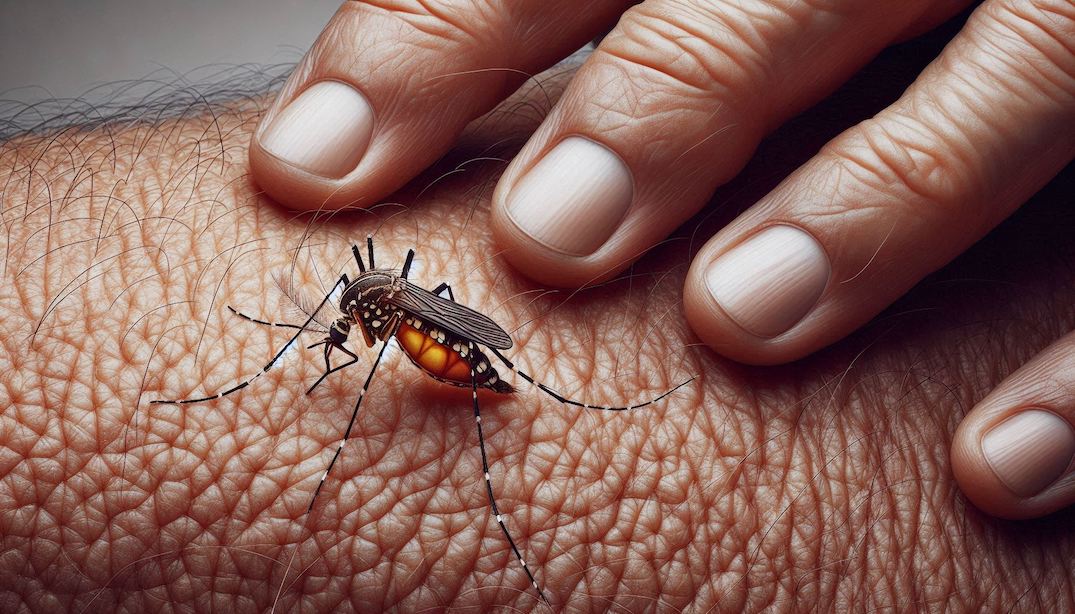
West Nile Virus (WNV) is a mosquito-borne virus that can cause fever, encephalitis (inflammation of the brain), or meningitis (inflammation of the membranes surrounding the brain and spinal cord). It is primarily spread to humans through the bite of an infected mosquito. The virus was first identified in the West Nile district of Uganda in 1937 and has since spread globally, including to the United States.
Cases Reported in the U.S.
The number of reported West Nile Virus cases in the United States varies each year. Since its first detection in New York City in 1999, there have been thousands of cases reported annually. On average, the U.S. sees about 2,000 cases each year, although this number can fluctuate based on weather conditions, mosquito populations, and other factors. In 2022, the Centers for Disease Control and Prevention (CDC) reported over 1,100 cases and around 90 deaths due to WNV.
When Does the Virus Occur?
West Nile Virus activity typically peaks during the warm months when mosquitoes are most active. In the U.S., most cases occur between June and September, with the highest number of infections usually reported in late summer or early fall. However, cases can occur as early as May and as late as October, depending on the region and climate.
Symptoms of West Nile Virus
Most people infected with West Nile Virus (about 70-80%) do not develop any symptoms. However, around 20% of infected individuals may develop what is known as West Nile fever, which includes symptoms such as:
- Fever
- Headache
- Body aches
- Joint pains
- Vomiting
- Diarrhea
- Rash
In severe cases (less than 1% of infections), WNV can cause serious neurological illnesses such as encephalitis or meningitis, which may present with symptoms like:
- High fever
- Severe headache
- Stiff neck
- Disorientation or confusion
- Coma
- Tremors
- Seizures
- Paralysis
Risk for Older Adults
Older adults, especially those over 60 years of age, are at greater risk of developing severe illness from West Nile Virus. People with certain medical conditions, such as cancer, diabetes, hypertension, kidney disease, and those who have received organ transplants, are also at higher risk of serious illness.
Can It Be Transmitted by Humans?
West Nile Virus is not typically transmitted from person to person. It is primarily spread through the bite of an infected mosquito. However, in rare cases, WNV can be transmitted through:
- Blood transfusions
- Organ transplants
- From mother to baby during pregnancy, delivery, or breastfeeding.
Treatment
There is no specific antiviral treatment for West Nile Virus infection. For mild cases, over-the-counter pain relievers can be used to reduce fever and relieve some symptoms. In more severe cases, patients may need to be hospitalized to receive supportive treatments, such as intravenous fluids, pain relief, and nursing care, depending on the severity of the illness.
Prevention
The best way to prevent West Nile Virus infection is to avoid mosquito bites. Here are some preventive measures:
- Use insect repellent: Apply EPA-registered insect repellents containing DEET, picaridin, oil of lemon eucalyptus, or IR3535.
- Wear protective clothing: Long sleeves, long pants, and socks can help reduce skin exposure to mosquito bites.
- Mosquito-proof your home: Use screens on windows and doors, and repair any holes to keep mosquitoes out.
- Eliminate standing water: Mosquitoes breed in standing water, so regularly empty items like flowerpots, birdbaths, and gutters where water can collect.
- Stay indoors during peak mosquito hours: Mosquitoes that carry West Nile Virus are most active at dawn and dusk, so try to stay indoors during these times.
Public health departments also play a crucial role in monitoring and controlling mosquito populations to reduce the spread of West Nile Virus .
-Nguyễn Duy Khiêm-
References
- CDC. (2021). West Nile Virus. Retrieved from https://www.cdc.gov/westnile.
- CDC. (2023). West Nile Virus Disease Cases Reported to CDC by State, United States, 1999-2022. Retrieved from https://www.cdc.gov/westnile/statsmaps/cumMapsData.html.
- Mayo Clinic. (2023). West Nile Virus. Retrieved from https://www.mayoclinic.org/diseases-conditions/west-nile-virus/symptoms-causes/syc-20350320.
- CDC. (2022). Symptoms and Treatment. Retrieved from https://www.cdc.gov/westnile/symptoms/index.html.
- NIH. (2020). West Nile Virus. Retrieved from https://www.ninds.nih.gov/Disorders/Patient-Caregiver-Education/Fact-Sheets/West-Nile-Virus-Fact-Sheet.
- CDC. (2021). Transmission. Retrieved from https://www.cdc.gov/westnile/transmission/index.html.
- Mayo Clinic. (2023). West Nile Virus Treatment. Retrieved from https://www.mayoclinic.org/diseases-conditions/west-nile-virus/diagnosis-treatment/drc-20350326.
- CDC. (2022). Prevention. Retrieved from https://www.cdc.gov/westnile/prevention/index.html.
- WHO. (2022). West Nile Virus. Retrieved from https://www.who.int/news-room/fact-sheets/detail/west-nile-virus.
